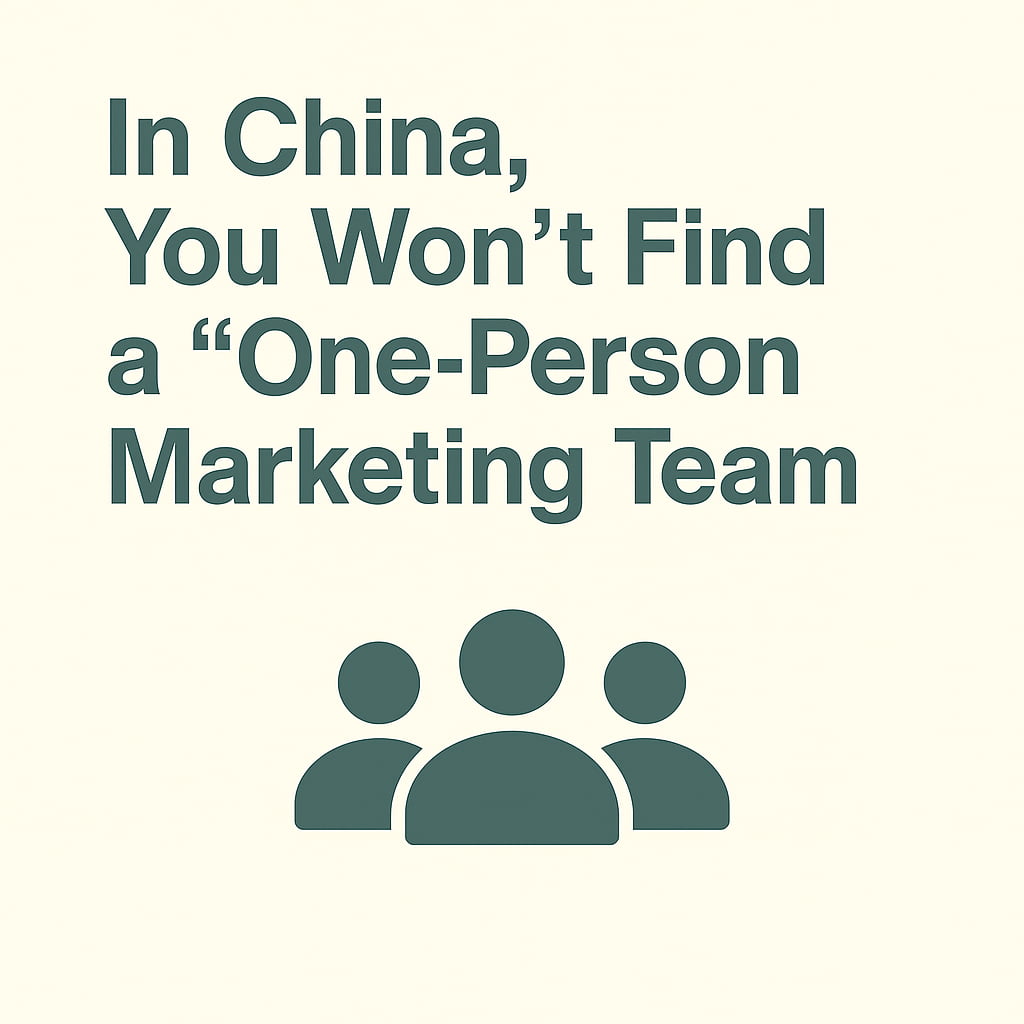In China, You Won’t Find a “One-Person Marketing Team”
By The Olivia
Independent Content Strategist for the China Market
This post is part of the “Marketing in China” series. Click here to view the series introduction and why it was created.
Many global companies still try the same approach when entering China.
They look for one “full-stack marketer” who can do everything — research, strategy, content, ads, community.
It looks efficient. It rarely works that way.
Why This Model Feels Possible Elsewhere
In Western markets, the path from awareness to conversion is more linear.
Most teams rely on a connected stack of tools.
Ads, email, content distribution — the workflow links together.
Formats are stable, expectations are clear, and performance can be measured in familiar ways.
China Works Differently
The issue isn’t capability.
It’s that China doesn’t run on a single path.
WeChat, Douyin, Rednote, Zhihu, Bilibili, Baidu — each moves with its own rhythm.
A message that works on one platform can look like a completely different piece on another.
People jump across systems: a review on Rednote, a conversation on WeChat, then a checkout on Tmall.
From the outside it looks like one market.
Inside, it functions more like a set of separate environments that happen to coexist.
What Often Happens in Practice
When a company hands all of this to one person, the work can look complete.
But the market doesn’t necessarily move.
Exposure stays shallow, and the workload becomes a loop.
Most problems appear when the model doesn’t fit the structure, even if the person is working hard.
A More Grounded Way to See It
In China, strategy and execution sit on different levels.
Brands that adjust faster tend to separate the two,
and treat each platform as its own context, not just another channel to fill.
This has less to do with team size,
and more to do with whether the structure leaves room for how China actually operates.
Closing Note
There’s no real version of a “one-person marketing team” in China.
The question isn’t how many tasks one person can take on,
but whether the system behind them fits the way information moves here.
👉 For more context, see: Why Funnel Thinking Doesn’t Work in China
← Back to All Articles
← Learn more about my services
You May Also Like:
Why Strategy Often Gets Squeezed Out of Execution
Why strategy often disappears during execution—and how this plays out faster in China’s marketing environment.
Ready to take your content further?
Let’s build a strategy that resonates in the Chinese market.
THE OLIVIA WAY
© 2025 THE OLIVIA WAY. All rights reserved.
